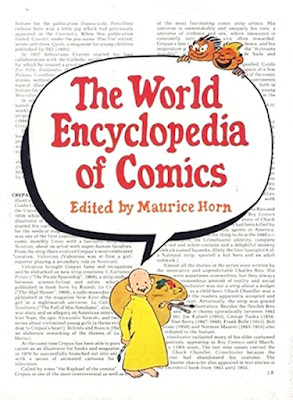New Yorker cartoonist Ed Koren passed away at the age of 87 on Friday, April 14th in his home in Brookfield, VT. Curtis Koren, his wife, said the cause was lung cancer.
Mr. Koren's fantastic, furry creatures of an indeterminate species, spoofed human behavior in The New Yorker for six decades. Over 1,100 of his cartoons were published in The New Yorker.
The New York Times:
"With Charles Addams, James Thurber and Saul Steinberg, Mr. Koren was one
of the most popular cartoonists in The New Yorker’s long love affair
with humor. To connoisseurs, his bristling pen-and-ink characters, with
or without captions, were instantly recognizable — nonconfrontational
humans and a blend of fanged crocodile and antlered reindeer who poked
fun at a society preoccupied with fitness fads (bike-riding), electronic
gadgets (cellphones) and pop psychology."
New Yorker cartoon editor Emma Allen:
"In May, 1962, The New Yorker made the excellent choice to accept its very first Koren cartoon:
a bedraggled writer, laboring at a typewriter, wearing a sweatshirt
emblazoned with the word 'SHAKESPEARE.' Despite the success that
followed—when 'Star Wars' came out, the Washington Post likened
its alien cantina drinkers to 'an Edward Koren cartoon . . . sprung to
life'—one sensed that Ed returned to the drawing board prepared to go
twelve rounds with the Muses. Send a kind word, and he’d likely respond
with something like 'The pencil is encouraged and will now run on the
paper until it has accomplished its always uncertain path.' It’s
terrible to think that the pencil is now laid down."
Michael Maslin interviewed Ed Koren upon the occasion of his sixty years as a New Yorker contributor:
MM: Here’re two quotes from you, from very different
times, that fit in here. One’s from 1983, and the other much later,
2010. but I feel they’re related:
You said you “develop cartoons by instinct,” and in the other you asked: “How do you seize the moment.” Cartoonists have some kind of instinct to recognize at that very moment that we should grab something.
EK: And to structure them so that the timing is just right. The caption for one thing, or setting up a situation. For instance, an idea came to me the other day, and I thought that could be funny,
but I have to figure out how to do it. How to really make it funny, and
not mundane. What physical moment should it be put in? And how the
caption should work: frontwards, backwards? The most important surprise
line in front, the back, the middle? On and on and on and on — the
decisions. But once you get a start, it’s kind of easier to try and
figure it out that way, kind of knowing where you want to go, but you’re
not quite sure how. And so working these out is exactly what you’re
talking about. It’s all very personal — what you think is the most
effective way of conveying what you want to convey.
Dick Buchanan shares a couple of Ed Koren cartoons that are rarely seen:
"As we know, many New Yorker cartoonists, at one time or another, would
stop by the offices of 1000 Jokes Magazine and sell them cartoons which
had fallen through the cracks of the major magazines. Edward Koren was
no exception. Thought you might be able to use these from 1964 which
appeared in For Laughing Out Loud and 1000 Jokes Magazine."
Thanks, Dick. Here they are:
From his biography at his site:
"Edward Koren has long been associated with the The New Yorker
magazine, where he has published over 1000 cartoons, as well as numerous
covers and illustrations. He has also contributed to many other
publications, including The New York Times, Newsweek, Time, G.Q., Esquire, Sports Illustrated, Vogue, Fortune, Vanity Fair, The Nation and The Boston Globe.
His illustrated books include 'How to Eat Like a Child,' 'Teenage
Romance' and 'Do I Have to Say Hello' (all by Delia Ephron), 'A Dog’s
Life' by Peter Mayle, 'Pet Peeves' by George Plimpton, and 'The New
Legal Seafoods Cookbook' by Roger Berkowitz and Jane Doerfer. 'Thelonius
Monster’s Sky-High Fly Pie' was published in 2006, 'Oops' by Alan Katz
in 2008, 'How to Clean Your Room' in 2010 and 'Poems I Wrote When No One
Was Looking' by Alan Katz in 2011. He has also written and illustrated
books for children, 'Behind the Wheel,' and 'Very Hairy Harry.' He has
also published six collections of cartoons which first appeared in The
New Yorker, the most recent being 'The Hard Work of Simple Living.'"
In addition to his books and gallery shows, Mr. Koren was also a volunteer firefighter for the Brookfield Volunteer Fire Department, where he once served as captain
From his Wikipedia:
"Koren received a Doctor of Humane Letters Degree from Union College, and received a John Simon Guggenheim Fellowship in Fine Arts in 1970. He received the Vermont Governor's Award for Excellence in the Arts in 2007. Koren was appointed Vermont's second Cartoonist Laureate in 2014, serving in the position until 2017."
Related:
Daily Cartoonist
Vermont’s Seven Days


























































